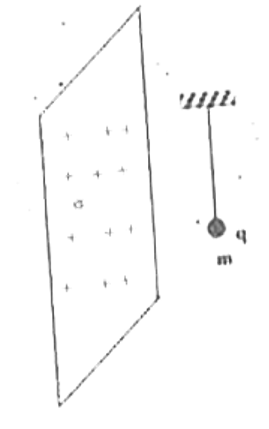Small clay particles hold calcium, potassium and magnesium ions because surfaces of clay particles are
smooth
covered with tiny crevices
negatively charged
waxy
The correct Answer is:3
Step-by-Step Solution:
1. Understanding Clay Composition:
- Clay is primarily composed of small particles that can hold various ions. It often contains organic matter, which is a mix of carbon, hydrogen, and oxygen.
Hint: Consider what materials make up clay and their properties.
2. Disassociation of Organic Acids:
- The organic matter in clay can disassociate into organic acids. This process results in the formation of negatively charged particles.
Hint: Think about how organic acids behave in a mixture and what ions they might release.
3. Charge of Clay Particles:
- Due to the disassociation of organic acids, the surfaces of clay particles become negatively charged. This negative charge is crucial for the attraction of positively charged ions.
Hint: Recall the relationship between charge types—how do positive and negative charges interact?
4. Attraction of Cations:
- Positively charged ions (cations) such as calcium (Ca²⁺), potassium (K⁺), and magnesium (Mg²⁺) are attracted to the negatively charged surfaces of the clay particles.
Hint: Identify the charges of the specific ions mentioned in the question and how they relate to the clay's charge.
5. Ionic Retention:
- The negatively charged surfaces of clay particles effectively hold onto these cations, allowing the clay to retain essential nutrients like calcium, potassium, and magnesium.
Hint: Consider the importance of nutrient retention in soil and how it affects plant growth.
Final Answer:
Small clay particles hold calcium, potassium, and magnesium ions because the surfaces of clay particles are negatively charged, which attracts and retains these positively charged ions.
- Clay is primarily composed of small particles that can hold various ions. It often contains organic matter, which is a mix of carbon, hydrogen, and oxygen.
- The organic matter in clay can disassociate into organic acids. This process results in the formation of negatively charged particles.
- Due to the disassociation of organic acids, the surfaces of clay particles become negatively charged. This negative charge is crucial for the attraction of positively charged ions.
- Positively charged ions (cations) such as calcium (Ca²⁺), potassium (K⁺), and magnesium (Mg²⁺) are attracted to the negatively charged surfaces of the clay particles.
- The negatively charged surfaces of clay particles effectively hold onto these cations, allowing the clay to retain essential nutrients like calcium, potassium, and magnesium.
Small clay particles hold calcium, potassium, and magnesium ions because the surfaces of clay particles are negatively charged, which attracts and retains these positively charged ions.
Topper's Solved these Questions
Similar Questions
Knowledge Check
- Question 1 - Select One
The size of the clay particle is less than
A0.02 mmB0.002 mmC0.2 mmD2.0 mm - Question 2 - Select One
Soaps do not work in hard water containing calcium and magnesium ions because
ACa2+andMg2+ ion form insoluble calcium and magnesium salts in the form of scumBNa+andK+ present in soap react with Ca2+andMg2+ and hinder cleansing processCa large amount of soap is to be used in presence of Ca2+andMg2+Dscum formed by combination of Na+,Ca2+andMg2+ stick to the cloth and are not removed on agitations. - Question 3 - Select One
In a permutit, the calcium and magnesium ions of hard water are exchanged by
ACO2− and HCO−3 ions of permutitBNa+ ions of permutitCAI3+ ions of permutitDSi4+ ions of permutit.
Explain the significance of sodium, potassium, magnesium and calcium on biological fluids.
View SolutionA hollow vertical cylinder of radius R and height h has smooth internal surface. A small particle is placed in contact with the inner side of the upper rim at a point P. It is given a horizontal speed V0 tangential to rim. It leaves the lower rim at point Q, vertically below P. The number of revolutions made by the particle will be:
View SolutionSmall particles attached to inner mitochondrial membranes are
View SolutionA small charged particle of mass m and charge q is suspended by an insulated thread in front of a very large conducting charged sheet of uniform surface density of charge σ. The angle made by the thread with the vertical in equilibrium is
 View Solution
View SolutionWater holding capacity of sandy soil as compared to clay soil is
View Solution

